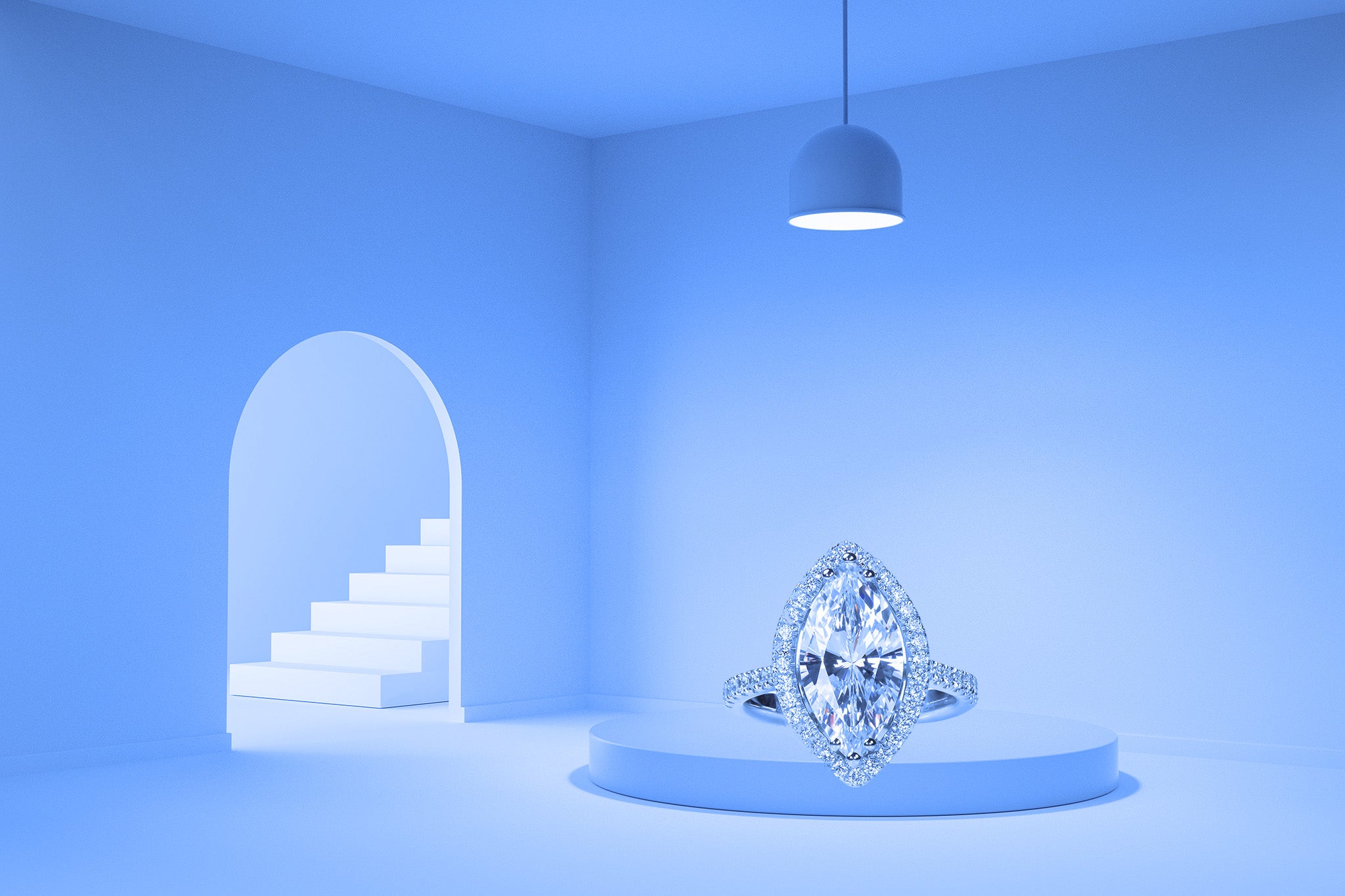4 Prongs vs 6 Prongs: Which is the Best for Your Gemstone?
11 May 2023
0 Comments

When it comes to choosing a setting for your gemstone or diamond, every little detail counts.
From the metal band to the center stone, every element contributes to the overall look and feel of the ring. One of the most crucial decisions to make is the type of prong setting for your gemstone. The prongs serve the essential function of holding your center stone in place, so it's vital to consider the advantages and disadvantages of the two most popular options: the 4-prong and the 6-prong setting. By exploring the unique features of each option, you can make an informed decision and select the perfect setting for your ring.
When designing a ring or shopping for an engagement ring, you may have come across the term "prongs". But what are prongs, exactly? Prongs are small metal claws or wires that are used to hold the center stone in place in most engagement ring settings. They are welded to the band and suspended upward, creating a basket for the center stone to sit within.
While prongs may seem like a small detail, they play a crucial role in the security and durability of your ring. Prongs come in various designs, from classic four-prong to modern six-prong settings, but their primary purpose is to secure the center stone. When a prong is properly set, it keeps the center stone firmly in place, preventing it from becoming dislodged or falling out.
Additionally, prongs can be strategically placed to cover weakened parts of gemstone cuts that feature points, increasing the durability of the stone. Gemstone cuts such as the pear cut, marquise cut, and princess cut benefit from prong placement, as it provides added security for the delicate points on these cuts. By protecting these vulnerable areas, prongs can help prolong the life of your ring and ensure that it remains as beautiful as the day you received it.

Pros
- Allows for maximum light to enter the diamond, making it appear more brilliant and sparkly.
- Shows off more of the diamond's surface area, making it more visible.
- Provides a more delicate and minimalistic look.
- Easier to clean and maintain.
Cons
- Offers less security for the diamond, as only four prongs are holding it in place.
- Prongs may need to be adjusted more frequently to hold the diamond securely.
- Not ideal for larger diamonds, as the weight of the stone can cause the prongs to bend or break over time.

Pros
- Offers more security for the diamond, as six prongs are holding it in place.
- Provides better protection for the girdle of the diamond.
- Can make the diamond look rounder and bigger when viewed from a distance.
- More durable and resistant to wear and tear.
Cons
- Can reduce the amount of light that enters the diamond, making it appear less brilliant and sparkly.
- May cover up more of the diamond's surface area, making it less visible.
- Can create a hexagonal shape on round diamonds, which some may not prefer.
- Requires more metal to be used in the prongs, which can increase the cost of the setting.
If you're looking for a classic and elegant way to showcase your diamond, a 4-prong setting might be the perfect choice for you. With four prongs placed evenly around the diamond, a 4-prong setting creates a boxy appearance that frames the diamond and highlights its shape.
One of the main advantages of a 4-prong setting is that it allows more light to enter the diamond and enhances its brilliance. A well-cut diamond will perform at its best with a 4-prong setting, making it appear larger and more dazzling.
Additionally, a 4-prong setting is recommended for smaller diamonds to avoid making them appear even smaller than they are. The fewer the prongs, the less metal covers the diamond and the more visible it will be.
If you're looking for a setting that exudes power and showcases the capacity of your diamond, a 4-prong setting is an excellent choice. The clean and simple lines of the setting draw attention to the diamond and allow it to take center stage.
However, the main drawback of a 4-prong setting is that it needs to be more secure than a 6-prong setting. With only four prongs to hold the diamond in place, there is an increased risk of losing the diamond if a prong breaks or bends.
The traditional design for a 4-prong setting features prongs at the 2, 4, 8, and 10 o'clock positions, creating a slightly squarish look to the setting. However, prongs can also be mounted in a north-east-south-west orientation, often called a compass or kite setting, which offers a modern and unexpected look but may make it harder for a wedding band to sit flush next to the engagement ring.
Overall, a 4-prong setting is an excellent choice for those who want a classic and elegant look that showcases the brilliance and beauty of their diamond. Just make sure to consider the security of the setting and take proper care of your ring to avoid any potential issues.


Choosing a six-prong design for your engagement ring offers several benefits. First, the six prongs create a more secure setting for your diamond, minimizing the risk of losing it if a prong breaks or bends. Additionally, the six prongs can offer better protection of the girdle, which is the thinnest and most vulnerable part of a diamond.
The six-prong setting is also recommended for diamonds larger than 1 carat, where a more secure setting is necessary to hold the weight of the stone. This is especially true for those who are rough with their jewelry or work in environments where their ring may be exposed to more wear and tear.
One of the most iconic six-prong designs is the Tiffany solitaire engagement ring. This classic design was introduced over 125 years ago and remains a popular choice today. The six prongs on this ring are designed to be lightweight and thin, minimizing the amount of metal covering the diamond and allowing it to appear rounder and larger when viewed from a distance.
For those with an oval cut diamond, placing prongs at the north and south positions can make the diamond appear more elongated, resembling a marquise cut. Finally, personal preference also plays a role in choosing between a four-prong and six-prong setting, but ultimately, prongs' main purpose is to hold the center stone in place securely.
A 6-prong setting can make a round diamond appear slightly larger from a distance due to the hexagonal shape formed by the prongs. However, this effect may be less noticeable with fancy-shaped diamonds. The size of the diamond itself is the main factor determining how big it will look.
Compared to 6-prong engagement rings, 4-prong engagement rings may be slightly less secure because there are fewer prongs holding the diamond in place. However, a well-made 4-prong setting can still be secure enough for everyday wear. It's important to choose a reputable jeweler and have the ring inspected regularly to ensure the prongs are not worn or damaged.
Now that you know more about the differences between 4-prong and 6-prong settings, it's time to make a decision on which one to choose for your gemstone. Both options offer unique benefits and have their drawbacks, so it's crucial to weigh them carefully before making your final choice. Remember, the setting you select will impact your engagement ring's overall look, feel, and security, so consider your needs and preferences carefully.
Tags:







